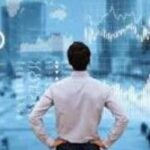What If You Lived in the Prehistoric Era?
Imagine a world without skyscrapers, smartphones, or even written language—a world where survival depended on your ability to navigate the rugged terrain and understand the elements around you. Welcome to the prehistoric era, a fascinating period in human history that predates recorded civilization. In this article, we’ll journey back in time to explore what life might have been like for our ancient ancestors and how they thrived in a world vastly different from our own.
Introduction to the Prehistoric Era
Understanding Prehistory
Prehistory refers to the period before written records existed, encompassing millions of years of human existence. It’s a time shrouded in mystery yet crucial for understanding our origins and evolutionary journey.
Importance of Studying Prehistoric Times
Studying the prehistoric era provides valuable insights into human behavior, adaptation, and cultural evolution. It helps us piece together the puzzle of our past and appreciate the resilience of early human communities.
Life in the Prehistoric Era
Life in the prehistoric era was characterized by its harshness and unpredictability. Early humans roamed vast landscapes, forging a symbiotic relationship with nature while grappling with formidable challenges.
Overview of the Environment
The prehistoric world was diverse, ranging from lush forests to expansive savannas. It was a dynamic environment shaped by geological processes and climatic fluctuations.
Challenges Faced by Prehistoric Humans
Survival was paramount in a world teeming with dangers—from predatory animals to harsh weather conditions. Prehistoric humans relied on their wits and resourcefulness to overcome adversity.
Hunting and Gathering
Evolution of Hunting and Gathering Techniques
Foraging for food was a daily struggle in the prehistoric era. Early humans honed their hunting and gathering skills, learning to track prey and identify edible plants for sustenance.
Importance of Food in Prehistoric Life
Food was more than just sustenance; it was a cornerstone of prehistoric society. It dictated migration patterns, social structures, and cultural practices, shaping the very fabric of early human life.
Shelter and Community
Types of Shelters Used
Primitive shelters provided refuge from the elements and protection against predators. From caves to makeshift huts, early humans ingeniously adapted their surroundings to create safe havens.
Social Structures in Prehistoric Communities
Community bonds were essential for survival in the prehistoric era. Early humans lived in close-knit groups, sharing resources and knowledge to thrive in challenging environments.
Tools and Technology
Advancements in Tool-Making
The development of tools marked a significant milestone in human history. From simple stone implements to sophisticated instruments, early humans innovated to meet their evolving needs.
Impact of Technology on Prehistoric Life
Technological innovations revolutionized prehistoric societies, enabling them to exploit new resources and expand their domains. Tools empowered early humans to conquer their environment and shape their destiny.
Art and Expression
Cave Paintings and Symbols
Prehistoric art offers a window into the minds of our ancestors. Cave paintings, petroglyphs, and symbolic artifacts serve as tangible expressions of human creativity and cultural identity.
Importance of Art in Prehistoric Cultures
Art wasn’t merely decorative; it was a means of communication, storytelling, and spiritual expression. Prehistoric art enriched communal rituals and conveyed profound insights into the human experience.
Communication and Language
Evolution of Communication Methods
Communication was vital for cooperation and survival in prehistoric communities. Early humans developed verbal and nonverbal cues to convey information and coordinate group activities.
The Development of Language
Language was a defining feature of human evolution, enabling complex thought and social organization. The emergence of language marked a pivotal moment in our cognitive development.
Survival Strategies
Adaptation to the Environment
Survival in the prehistoric era demanded adaptability and resilience. Early humans adapted to diverse ecosystems, mastering survival strategies that ensured their continued existence.
Strategies for Survival
From communal hunting expeditions to knowledge-sharing networks, prehistoric societies employed a variety of strategies to mitigate risk and secure their livelihoods.
Human Evolution
Changes in Human Anatomy
The prehistoric era witnessed remarkable changes in human anatomy, reflecting our ongoing evolution as a species. Adaptations to different environments shaped our physical characteristics and behaviors.
Evolutionary Milestones
Key evolutionary milestones, such as bipedalism and brain expansion, set the stage for human dominance on the planet. Each innovation propelled us further along the path of progress and innovation.
Dangers and Threats
Natural Disasters
Earthquakes, floods, and volcanic eruptions posed constant threats to prehistoric communities. Early humans learned to coexist with nature while devising strategies to mitigate the impact of disasters.
Predators and Threats to Survival
Predatory animals posed a constant threat to prehistoric humans, forcing them to develop defensive tactics and communal safeguards against potential attacks.
Cultural Practices and Beliefs
Rituals and Ceremonies
Cultural rituals played a central role in prehistoric societies, fostering community cohesion and spiritual connection. Rituals commemorated significant events and honored ancestral traditions.
Spiritual Beliefs of Prehistoric Cultures
Spirituality permeated every aspect of prehistoric life, shaping beliefs about the natural world and humanity’s place within it. Early humans sought meaning and solace in the mysteries of existence.
End of the Prehistoric Era
Transition to Agricultural Societies
The advent of agriculture marked the end of the prehistoric era, ushering in a new chapter in human history. Settlements flourished, and civilizations emerged, forever altering the trajectory of human civilization.
Impact of Civilization on Prehistoric Life
The rise of civilization brought unprecedented changes to human society, transforming the way we live, work, and interact with the world around us. It marked the dawn of a new era defined by progress and innovation.
Exploring Prehistoric Artifacts
Archaeological Discoveries
Archaeological excavations unearth a treasure trove of prehistoric artifacts, offering invaluable insights into ancient civilizations and their way of life.
Insights into Prehistoric Life
Each artifact tells a story, illuminating the daily struggles and triumphs of prehistoric peoples. Through careful analysis and interpretation, archaeologists piece together the puzzle of our shared human heritage.
Modern Perspectives on Prehistory
Reconstructing Prehistoric Life
Advances in science and technology enable us to reconstruct prehistoric environments and ecosystems with unprecedented accuracy. Through interdisciplinary research, we gain new perspectives on our ancestral past.
Lessons from the Past
The study of prehistory reminds us of our interconnectedness with the natural world and the resilience of the human spirit. It inspires us to learn from the past and forge a sustainable future for generations to come.
Conclusion
The prehistoric era stands as a testament to the indomitable human spirit and our capacity for adaptation and innovation. By exploring our ancient past, we gain a deeper appreciation for the challenges and triumphs that have shaped our collective journey.
FAQs
- What evidence do we have of prehistoric life?
- Archaeological sites, fossil remains, and ancient artifacts provide tangible evidence of prehistoric civilizations.
- How did prehistoric humans communicate without written language?
- Prehistoric humans communicated through verbal cues, body language, and symbolic gestures, laying the foundation for the development of language.
- What role did art play in prehistoric societies?
- Art served as a means of expression, communication, and cultural identity, reflecting the beliefs and values of prehistoric communities.
- How did prehistoric humans adapt to their environment?
- Prehistoric humans adapted to diverse environments through technological innovation, social cooperation, and cultural adaptation.
- What lessons can we learn from studying prehistory?
- Studying prehistory teaches us about human resilience, adaptation, and the interconnectedness of life on Earth.






